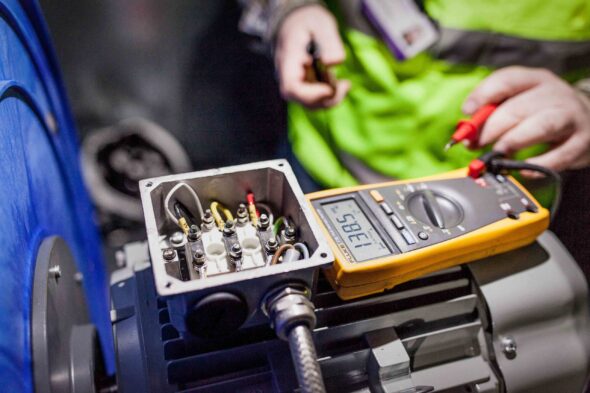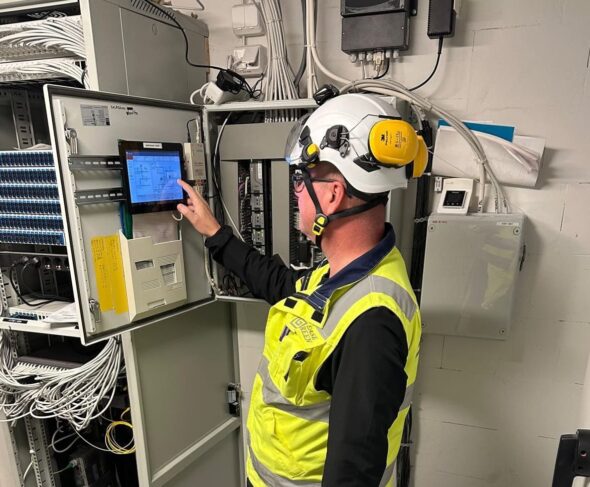Energy efficiency projects are a difficult species. There can be hundreds of variables to consider in the design and implementation of a project. Sometimes there are surprises and issues that need to be dealt with quickly.
What better help in such situations than one experienced extra set of eyes or an extra brain?
We are known for delivering what we promise. We think, bend and run for the customer. That said, a sparring supervisor is often useful – for us and for the end client. Eyes that look from a different angle and an extra brain to make sure everything is done in the best possible way. The client gets their own eyes involved in every step of the process and an interpretation of what the different technical solutions really mean.
There are two types of supervision in construction projects: formal site supervision and more consultative supervision. Now I’m talking about the latter. Consultative supervision is actually advice or sparring. It is also called advocacy, monitoring or supervisory advice.
Such consultative supervision is a relatively recent phenomenon. It has increased hand in hand with the refinement of contracts. Twenty years ago, it was common for contracts to be very simple. Now contracts are much more specific. Almost all contractors want to understand what is being done and how. This improves the quality of construction and reduces misunderstandings.
Personally, I would summarise the benefits of supervisors in five points.
- Human error to a minimum. Even the best project manager or designer is not perfect, not even for us. A supervisor brings an extra set of eyes to the different stages of the project, ensuring that no detail is overlooked.
- A common language makes things easier. Often during a construction project, things come up that were not foreseen at the beginning of the project. In such situations, it is helpful if the supervisor is able to take a position on technical issues on behalf of the client. This makes things smoother and faster.
- Saving time and worry. The supervisor represents the client at all stages of the project, allowing the client to concentrate on their own work. The supervisor approves the plans and project phases on behalf of the client. The client can only come to the handover meeting.
- The certainty that things have been done well. If the customer does not have the skills to assess technical solutions, they may be left with uncertainty as to whether things have been done well in the end. A thumbs up from the supervisor gives the final assurance that the project has been a good one.
- More muscle for problem solving. We know what we are doing, but we are humble about our projects. A supervisor from a different background may well have an insight into how a detail or aspect can be done even better – or a problem solved together. The best outcome is in everyone’s interest.
It’s the same as when a doctor consults a colleague when dealing with a more challenging patient. It’s about getting the best possible care for the client.
Professionalism is taking things as they are, not as a criticism of your own skills. Text improves when it is edited. In the same way, our projects become even better when they have a competent supervisor.
Or more directly: with a good supervisor, it’s easier to deliver quality projects and stay on schedule.
If the project goes well, it is difficult to see the tangible benefits of monitoring below the line. You have to take that risk. The supervisor can save a lot that may be difficult to translate into euros. The potential benefits are much greater if the project is multi-polar or if there are problems or pressures.
How to avoid engineering swordplay
For all the good it does, supervision is not always optimal. The most common challenges are twofold: engineering skills and adequate resources.
Those who have been caught up in engineers’ mutual wisdom know that it is not always a pleasant listen. There are many ways of doing things and none of them is necessarily wrong.
The simplest way is to agree the ground rules at the outset so that things are put on the table together and the supervisor helps the end client to understand what is at stake. In this case, the supervisor is more like a village elder or advisor who gently guides the process. The client can insist on such a culture from the outset.
It is also a challenge if the time available for monitoring is too tightly limited. It is sensible to allow sufficient time for the supervisor to study the plans and look at things through the eyes of the client. In our experience, the greatest benefit is achieved if the supervisor is involved from the very beginning of the project, i.e. from the implementation planning stage.
At every turn of the project, the supervisor’s job is to look after the client’s interests, even if they conflict with our own. Isn’t there a confrontation involved? Not really. The client’s interest is genuinely always our interest too.
The author Johannes Rimpiläinen is an account manager serving LeaseGreen’s investor clients, who believes that the benefit of control follows the formula 1 + 1 = 3.
Thanks for the good ideas and sparring to Jusu Kainulainen from Vahanen, who looks at things from the other side of the table.












